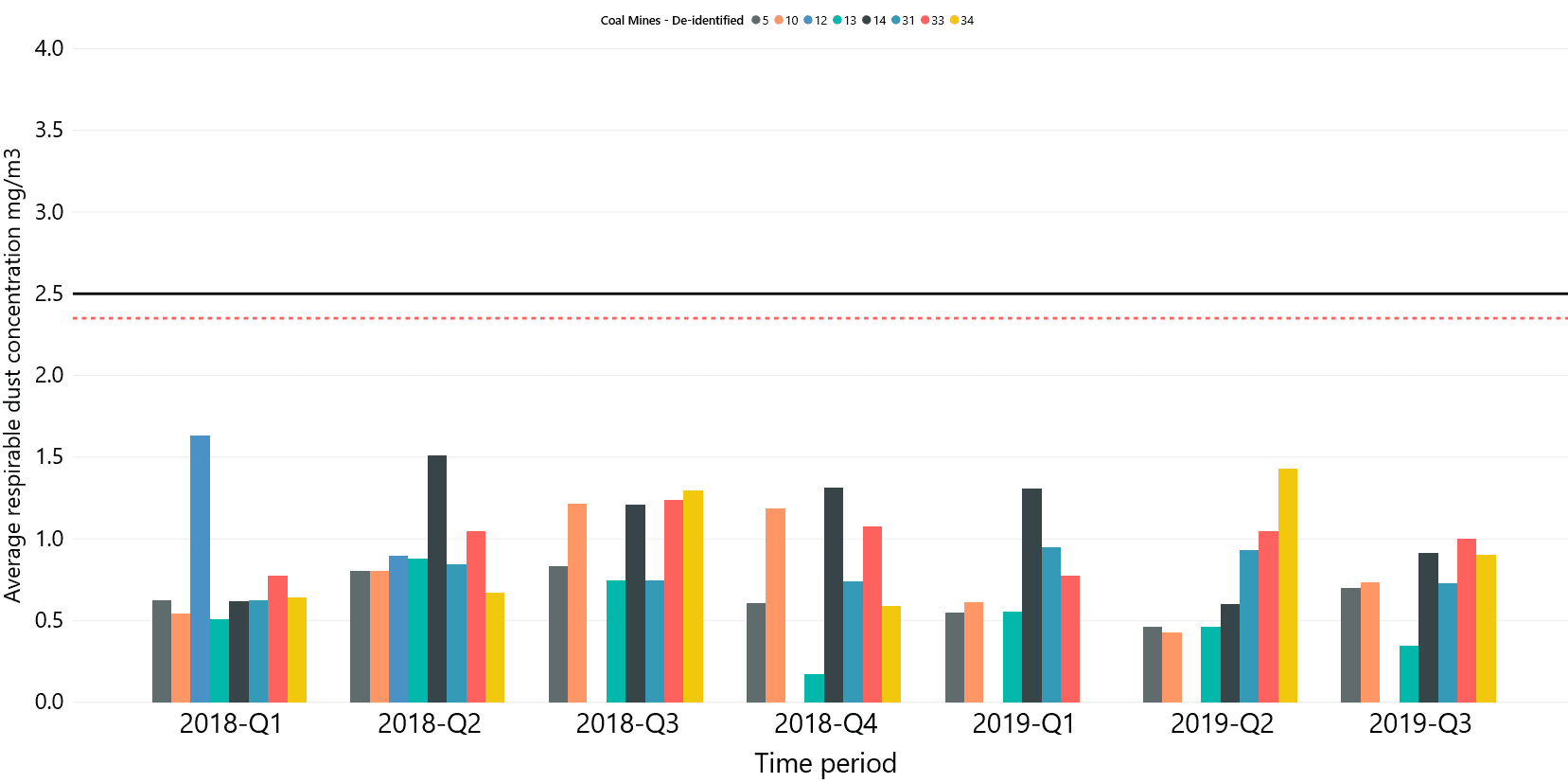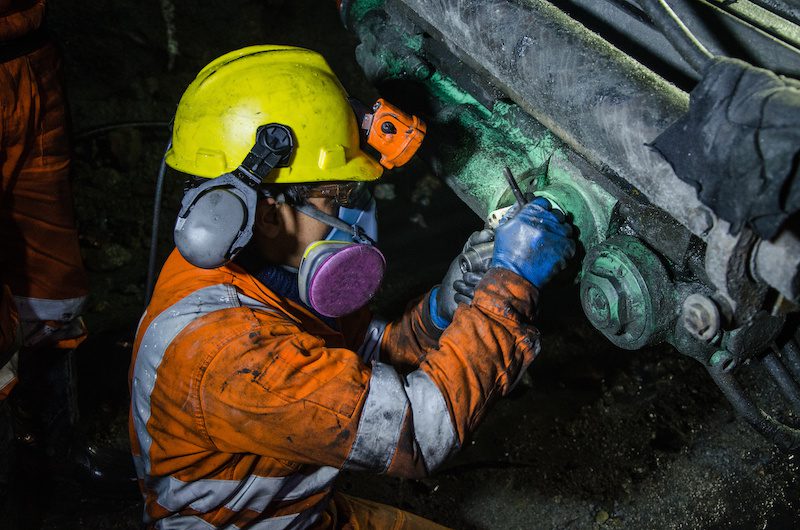An investigation by the Queensland opposition has revealed that only one occupational hygiene inspector has been checking dust levels in Queensland coal mines despite the Queensland Government claims that the State has fully implemented controls for the coal mine workers dust diseases.
According to information released by Dale Last, LNP Shadow Minister for Natural Resources and Mines, only four inspectors are qualified occupational hygienists. However, only one inspector conducts targeted audits for coal mines.
The other occupational hygiene inspectors work across mineral mines and quarries.
AMSJ has also been informed that respirable dust data gathered and published for 2018 and Q1, Q2 and Q3 2019 has identified that for some similar exposure groups (SEG) such as workers on the longwall face, datasets were less than 6 samples over a three month period indicating that some of the data published by the department is unlikely to be statistically significant and relevant to Governmental decision making. The numbers of samples taken by the department may reflect potential resourcing issues for dust inspections.
Queensland mines may fail new dust level standards
Based on Departmental sampling data, many of Queensland mines would fail Safe Work Australia standards.
Safe Work Australia had previously recommended that a Time Weighted Average (TWA) concentration of 0.9 mg/m3 for respirable dust of bituminous and lignite coal and 0.4 mg/m3 for respirable dust of anthracite coal with quartz content <5% is recommended to prevent coal worker’s pneumoconiosis (CWP), progressive massive fibrosis (PMF) and chronic obstructive pulmonary disease (COPD)
Despite the proposed reduction by Safework Australia to 0.9 mg/m3, Work Health and Safety (WHS) ministers voted to adopt the following workplace exposure standards (WES) for respirable coal dust and respirable crystalline silica to:
• Respirable coal dust will be reduced to a time-weighted average (TWA) of 1.5 mg/m3
• Respirable crystalline silica will be reduced to a TWA of 0.05 mg/m3.
WHS ministers further agreed that the revised WES for respirable coal dust will apply from 1 October 2022 (allowing for a three-year transitional period). For respirable crystalline silica, WHS ministers agreed the revised WES be implemented as soon as practicable.
Safe Work Australia will publish a revised version of the Workplace exposure standards for airborne contaminants on 16 December 2019.
Last’s call for safety inquiry goes unanswered

Mr Last, who has repeatedly called for an inquiry into mine safety in the state, said that “The Auditor General has savaged Labor’s lack of transparency around the implementation of the recommendations from the inquiries into black lung”
“It is outrageous that even after all we know about black lung in Queensland, there is still only one inspector conducting audits on dust levels in coal mines.
The Auditor-General recently released a report into the black lung dust levels in Queensland mines.
Key findings from Queensland’s Auditor General
Notable findings from the Auditor General’s report included:
- Since July 2018, DNRME has reported that the government has implemented all the Monash review recommendations. DNRME has reiterated the view that it has delivered and/or implemented all Monash review recommendations throughout this audit. This is despite DNRME’s documented advice to government that some initiatives, such as its integrated information management system and chest x-ray audit program, will not be completed until 2020 to 2022.
- Prior to this audit, in 2018, DNRME commissioned consultants to conduct two external reviews to assess the status of the Monash review and the CWP Select Committee report recommendations. The consultants were only asked to consider whether the intent of recommendations had been met through planned actions, rather than whether action had been completed. One consultant report redefined the intent of the Monash review recommendations to match the actions that DNRME had already taken. Despite this, DNRME and the Commissioner for Mine Safety and Health have relied on multiple definitions of ‘delivered’, ‘actioned’ and ‘implemented’ from these consultant reports to report internally and publicly on status.
- In the absence of consistent, documented definitions of implementation status, DNRME’s current reporting implies there is no further work to be done to fully implement the Monash review recommendations.
- From July 2016 until March 2019, DNRME sent chest x-rays to Chicago for review by experts (referred to as a ‘dual read process’) to address deficiencies in health screening identified in the Monash review. However, there was a considerable time gap in 2017 and 2018 for workers getting the second read results. We calculated that, on average, it took 195 calendar days (220 median) from the time DNRME sent a chest x-ray to the United States until the date it received a report. DNRME instead measured the number of business days (reporting an average of 141 business days). The data available did not measure the time between the workers’ first chest x-ray and receiving the second read results.
- Some recommendations, such as expanding the Coal Mine Workers’ Health Scheme to include other coal workers, impact more than one entity. But the decision not to implement the recommendations were not considered by Cabinet and instead made at department (senior executive) or minister level.
- Given that Cabinet has responsibility for developing and coordinating the policies of the government, and that the government had publicly stated its support for all recommendations (including those subject to further consultation), we had expected that Cabinet would have been required to endorse decisions of this nature.
- There is no central or public record of information documenting the rationale for not implementing recommendations that were previously supported by the government . In the interest of transparency, entities should include this in the public reporting to accurately reflect the government’s positions on the recommendations.
- There is also no collective view or monitoring across all responsible entitles of how much government has spent on implementing the reforms—despite committing $35 million.
- Four inspectors are qualified as occupational hygienists who can conduct dust monitoring audits. However, only one inspector conducts targeted audits for coal mines. The other inspectors work across mineral mines and quarries.
- DNRME advised that not all the funds have been spent (approximately $8.264 million was unspent at the end of June 2019).
- There has been no reporting of how the funds have been spent collectively across the government entities responsible for implementing relevant recommendations.
Read more Mining Safety News














To clarify, the Safe Work Australia exposure standards referenced are incorrect. The ratified standards are now publicly available.
x6 Certified Occupational Hygienists (COH’s) are now under employment by the DNRME, this is the highest technical grading provided by the Australian peak body for Occupational Hygiene (AIOH). I’m not aware of any other Department in Australia having 6 or more COH’s available to support regulatory activities.
Thanks, Dusty for your comment. We have updated the content to reflect the new standards that were accepted by Safework Australia following an agreement by Ministers in November 2019. Based on data sets published by the Department, we believe that many mines may not meet these standards.
We also note that these are due for publishing today the 16th December 2019 by Safework Australia.
We also note your point regarding professional COH’s employed by the Department. The competency of a COH is certainly not in question.
Of the employees engaged by the Department for Coal Mine Health & Safety dust inspection, we understand that only one has been granted the powers of an inspector under Act – Division 4 Powers of inspectors, inspection officers and authorised officers for coal mines.
As you will be aware, there is a range of substantial differences when it comes to statutory inspection or ‘supporting’ regulatory activity.
We also note that Simtars (which is a division of the Department) has a range of other employees who undertake dust monitoring both on a commercial basis and for the inspectorate. Many of our readers have asked us, why Simtars personnel haven’t been granted the powers of inspectors under the Act.
Also, we note that Western Australia has not yet adopted the new RCS exposure standards. According to sources, a number of changes will be required under the Occupational Safety and Health Regulations 1996 and the Mines Safety and Inspection Regulations 1995 prior to implementation.